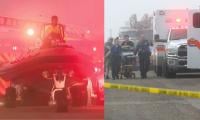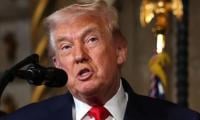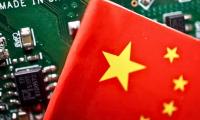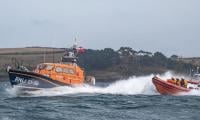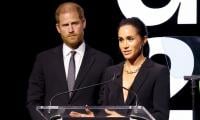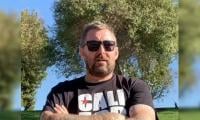In the first part of this column yesterday, we discussed a brief history of Japan and the role of prime minister Nakasone in the 1980s. As Japan had been an American ally since 1945, when the Soviets invaded Afghanistan it was a no-brainer for Japan.
Japan and Russia had a long history of animosity from the 1905 war in which Japan had inflicted a humiliating defeat on the Russian navy. For the next 75 years, up to 1980, relations between Japan and Russia saw many ups and downs. There were territorial disputes over some islands that both Japan and the USSR claimed as theirs. Then the rift between China and the USSR in the 1960s had brought China and Japan somewhat closer and the Soviet Union was not amused. Though Japan and the USSR had full diplomatic and trade relations, the warmth was missing.
After the Soviet military intervention in Afghanistan, Japan immediately condemned the Soviet occupation forces. It aligned itself with the Western capitalist powers which wasted no time in organizing a resistance movement against the Soviet forces in Afghanistan. General Zia desperately needed support and offered his services to plunge Pakistan into this war game. Initially, Japan’s reaction was slow in joining the war, but when Nakasone became prime minister his conservative streak, and his desire to make Japan more active internationally and militarily, brought him much closer to Reagan, and soon Japan was supporting Pakistan in its war efforts against the Soviets.
Since Japan was allowed to keep only self-defence forces after the surrender in 1945, Nakasone was unable to send any military forces but Japan’s developmental and humanitarian organs were brought into action in Pakistan. Nakasone facilitated the establishment of Japanese humanitarian centres and medical assistance units along the border with Afghanistan, where the Afghan militants and warriors – the so-called ‘Mujahideen’ – were waging a ‘holy war’ or Jihad. Tetsu Nakamura was one of those Japanese doctors who set up their clinics and hospitals in Pakistani border areas with Afghanistan. Nakamura stayed in this region for the rest of his life.
Apart from the political dynamics of the Afghan war of the 1980s and then the civil war spanning over 30 years to date, Nakamura’s devotion to the Afghan people was legendary. He was a physician and a devoted aid worker who was eventually killed in Afghanistan last year (on December 4, 2019). He had become a great global figure. He was head of the Afghan unit of the Peshawar-kai aid group. He was killed with five Afghans including his driver and bodyguards when armed men attacked their vehicles in Jalalabad in the eastern province of Nangarhar.
Nakamura was just 36 years old when he arrived in Pakistan in 1984, and then spent the next 36 years in Pakistan and Afghanistan, of course with some minor breaks. Initially, he worked as a volunteer in Peshawar to treat patients with leprosy, and other Afghan refugees. After the withdrawal of the Soviet forces, he opened three clinics to provide medical services in the Nangarhar province. More than symptoms, he was interested in identifying the causes of prevalent illnesses there. He reached the conclusion that malnutrition was a root cause for the health issues in that region.
Essentially, it was a lack of food items that made people susceptible to disease. Drought-like conditions were prevalent all along, but starting in 2000 a severe drought hit that area. Incidentally, one of his Japanese colleagues, Kazuya Ito, was an agricultural specialist working on the construction of irrigation channels. Nakamura decided to cooperate with him so that some food security can be established in that area. In 2003, Nakamura started building a 25km long irrigation system called Marwarid Canal in Khewa district of Nangarhar. He was inspired by his own 200-year-old irrigation system that was built without modern equipment, near his home town of Fukuoka in Japan.
Ito was abducted and killed by the Taliban in 2008. Even after Ito’s assassination, Nakamura continued to work in the country and used the skills he had learned from his friend to develop irrigation in the Kunar district of Nangarhar. Apart from running two hospitals, he devoted the last ten years of his life to building canal projects, taking water from the Kunar River and transforming a vast desert area on the outskirts of Jalalabad into lush green forests and productive wheat farmlands. (This writer has had an opportunity to travel to Jalalabad on an assignment related to education there).
Dr Nakamura built or restored eight additional canals and eleven small dams that irrigate now an estimate area of over 16, 000 hectares. Over his lifetime, Nakamura is believed to have benefitted over a million people by both his irrigation and medicinal interventions. He had become a victim of attacks and threats earlier too but he refused to go back or pack up his assistance unit. He was reluctant to keep security guards but then he was forced by the Afghan government to keep them. A security vehicle followed him everywhere but the eventual attackers used two vehicles with eight armed men.
One vehicle intercepted and targeted the security guards and the other rammed into Nakamura’s car and killed him with his associates. Nakamura was a recipient of the Philippines’ Ramon Magsaysay Award in 2003 for dedicating his life to helping Afghan people. Though a physician by education, he developed his professional expertise in irrigation systems to improve agriculture in eastern Afghanistan. The local Afghan people loved him so much that he was called Kaka Murad instead of Nakamura. In October 2019, Afghan President Ashraf Ghani granted him honorary Afghan citizenship for running Peace Japan Medical Services in Afghanistan. His humanitarian work spanning over three decades was widely recognized.
The life stories of Nakasone and Nakamura are both divergent and intertwined. Divergent in the sense that Nakasone lived a long live spanning over a century and mostly devoted his life to politics, and that too of a conservative nature. Nakasone was interested in altering the peaceable constitution of Japan that forbade his country to indulge in war efforts. He openly sided with the US and other Western countries in their covert and overt wars against the Soviet Union and the socialist system. Nakasone wanted to revive traditions and was reluctant to embrace socially progressive ideas, though he was economically liberal.
Nakamura’s life intertwined with that of Nakasone in the sense that if Japan had not decided to take sides against the Soviet Union, perhaps Nakamura would have never landed in Pakistan to help Afghan refugees. It was Nakasone who enabled Japanese professionals and volunteers such as Ito and Nakamura to contribute to the development and welfare of the Afghan people. In terms of political impact, Nakasone was a great personality, as he was one of only three Japanese prime ministers in the post-war period who ruled for five or more years.
From 1945 to 2000, in 55 years Japan had 27 prime ministers with an average of just two years each in office. Only three prime ministers held the office for five or more years: Yoshida for six years, Sato for eight years, and Nakasone for five years. In this regard, Nakasone can rightly be termed as one of the three great PMs of Japan in the 20th century. He interacted with the likes of Reagan, Thatcher, Kohl, Mitterrand, and Mulroney – all forming a group of conservative, right-wing, pro-market economy politicians, who shared a hatred of socialism and facilitated its collapse, economically, politically, and militarily.
Nakamura, on the other side was seemingly an apolitical figure who was more interested in development and welfare work. In the final analysis, I rate Dr Nakamura a much greater personality who served people in faraway lands without economic and political considerations.
Concluded
The writer holds a PhD from the University of Birmingham, UK and works in Islamabad.
Email: mnazir1964@yahoo.co.uk
